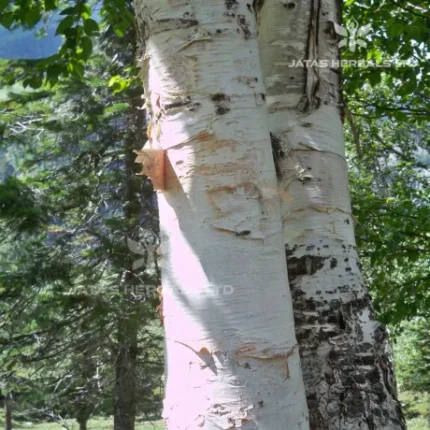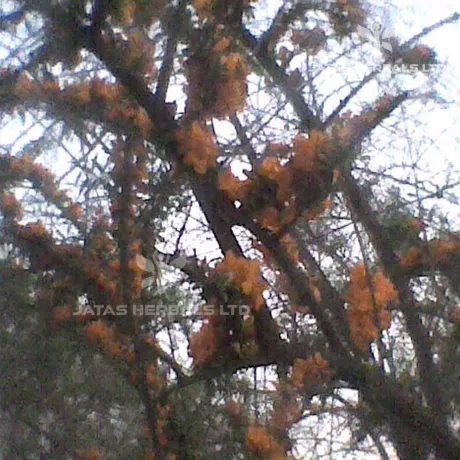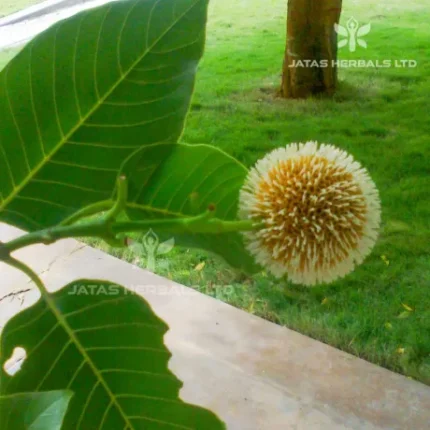Though Brihat Trayi quoted it extensively, Caraka did not include it under any of the vargas. Sushruta and Vagbhatadescribed it under four ganas. Sushruta detailed about the seed oil of Palasa while considering it as kapha-pitta praÜamana. It is mainly indicated in Prameha, Plihodara, Vidarika and Apatanaka. Caraka mentioned it in the management of Arsas, Atisara, Raktapitta, Kushtha, Raktaja Gulma etc. Its Vayasthapana property is emphasized by Rajamartanda.
Controversial Studies– At two places in Caraka Samhita (C.S.Si.3/37 & C.S.Si.3/63) a plant by name Palasaa is described. In both instance it is more indicating towards Karcura or Sathi. Caraka appears to indicate Palasa with a synonym ‘Vatapotha’ (C.S.Ci.3/257).
Different varieties– Another variety ‘Lata-Palasa’ (B. superba Roxb) is also available at present. However Raja Nighantu quotes four varieties viz., Rakta (red), Pita (yellow), Sveta (white) & Nila (blue). Sveta Palasa is considered to be the best brain tonic (Buddhi vardhaka).
Botanical Description– A deciduous tree growing upto 15 m. height and 1.5-1.8 m in girth, trunk is crooked. Bark light-brown or bluish-grey, yielding a ruby-red vitreous gum (Butea gum or ‘Bengal keno’) Wood-white or yellow-brown, often becoming grey or greefish-brown. Leaves- trifoliolate, large, unequal, 10.2-20.4 cm. Flowers- in racomes, brilliant orange-red, 3.8-5.1 cm. long; lower calyx-teeth deltoid. Fruits- pods, silvery-white, broad, dehiscent (by one suture). Seeds- flat, elliptic, reddish-grey, 3.2 cm.
Distribution– Throughout India, upto 1219 m. height (except arid tracts).
Major chemical constituents–
Flowers– butin, isocorcopsin, monospermoside, butein (major glucoside), isomono-spermoside, coreopsin, palasitrin.
Roots–Glycine, Jalaric esters I, II, III & IV etc.
Gum– leucocyanidin, procyanidin etc.
Seeds– monaspermin, (–)- palasonin, essential oil with myristic, palmitic acids etc.
Part Used– stem bark, flowers, seeds, gum
Dosage–Bark decoction 50-100 ml, seed powder 3-6 g, flower powder 3-6 g, gum 1-3 g,
Research–
(1) The alcoholic extract of the seeds on oral administration, produced antifertility activity in female mice and rats. The extract partially inhibited ovulation and significantly suppressed the decidua cell reaction in rats- The LD50 in mice was found to be 7.5 g/kg (Razdan et al., 1969; Khanna and Chaudhury, 1968 & Khanna et al., 1966).
(2) The alcoholic extract of the flower petals reported to possess anti-oestrogenic effect of at a dose of 3.2 mg/kg per day (Laumas & Uniyal, 1966 & Ind. J. Pharm. Sci. 1990).
(3) Chronic administration of B. ighantu by oral route for 2 months produced marked nephrotoxicity and anaemia in rats, dogs and rabbits. Congestion in liver, lungs and spleen was also observed (Sachdev et al., 1965).
(4) Palasonin and its salt exhibited good anthelmintic activity in vitro on Ascaris lumbricoides and in vivo on Toxicara canis, comparing favourably with piperazine and santonin (Kaleya & Kurup, 1968).
(5) Alcoholic extract of seeds prevented pregnancy in rats at a dose of 300 mg/kg on days 1 to 4 of pregnancy. At higher dose it was toxic. Flowers also showed encouraging anti-implantation activity in rats at a dose of 300 mg/kg (IJMR, 1968).
(6) Flower extract exhibited antihepatotoxicity activity (Planta Med. 1986).
(7) Seeds given orally effective in roundworm and threadworm infestations but ineffective in case of tapeworm. Nausea, vomiting, dizziness, general weakness and pain in abdomen regularly observed as side-effects (J. Res. Ayu. & Siddha, 1986).
(8) Oil obtained from the seeds of B. superba, in a dose of 120 mg/kg showed a marked and prolonged fall in B.P. with no effect on respiration (Siddiqui & Inamdar, 1963).





Reviews
There are no reviews yet.